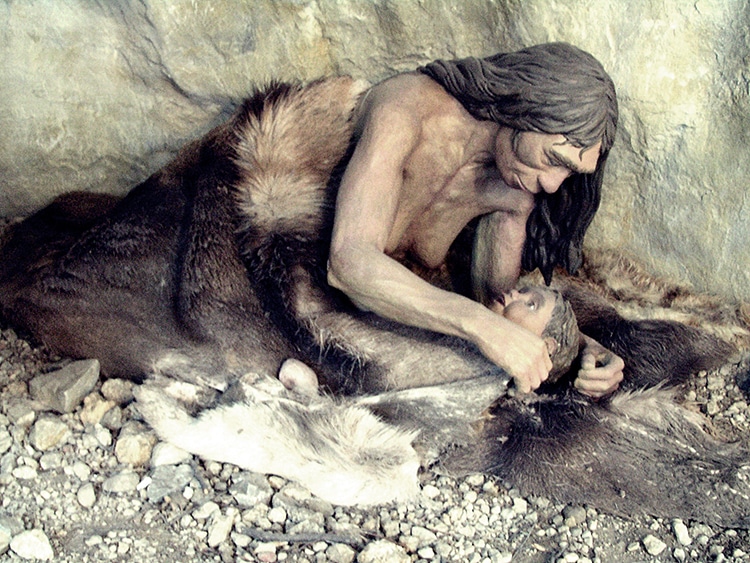A model of a Neanderthal man and child at the Natural History Museum, Vienna, Austria.
In prehistoric times, however, researchers have hypothesized that children born with the condition typicallydid not survive infancy.
But the bones of the Neanderthal child from Valencia are not those of an infant.

A model of a Neanderthal man and child at the Natural History Museum, Vienna, Austria. (Photo:Wikimedia Commons,CC BY-SA 4.0)
The researchers estimate the child lived to about 6 to 7 years old.
Similarly, they believe the formation of its remains suggest only Down’s syndrome as opposed to other explanations.
This child’s age indicates that they survived past infancy with the devoted care of a mother.

Neanderthal mother and child depicted in a model at a Czech Republic museum. (Photo:Wikimedia Commons,CC0 1.0 Public domain)
Did Neanderthals just help those who could reciprocate?
This new evidence suggests the caring was not so limited.
Neanderthal mother and child depicted in a model at a Czech Republic museum.